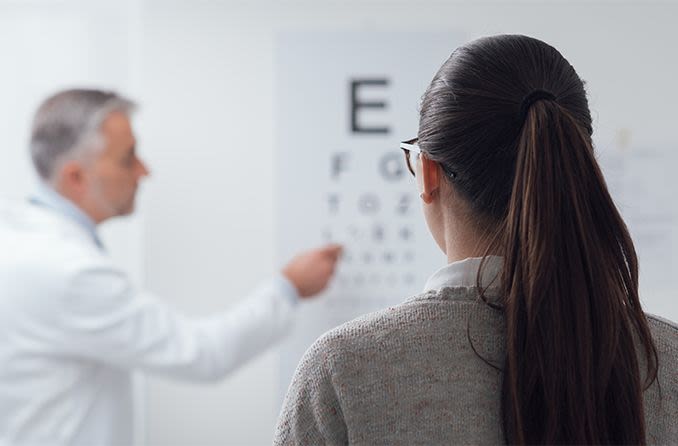Does LASIK eye surgery correct astigmatism?

LASIK laser eye surgery is known for its ability to fix nearsightedness and farsightedness. But can astigmatism be corrected by this technology? In most cases, yes — and once it is corrected with laser eye surgery, the effect is usually permanent.
Before procedures like LASIK were widely available, astigmatism was only “treated” by wearing glasses or contact lenses. Either can still be a great solution, but laser eye surgery now offers an alternative for people who don’t want to deal with the maintenance of corrective lenses.
For those who qualify for LASIK, a short operation can provide a lifelong solution to the correction associated with astigmatism.
How can astigmatism affect your eyesight?
Astigmatism is a common type of refractive error that happens when the eye is slightly misshapen. Nearsightedness (myopia) and farsightedness (hyperopia) are the other two refractive errors.
The clear layer in front of your pupil is called the cornea. A normal cornea is evenly rounded like a ping pong ball, but an astigmatic cornea resembles the top of an egg — still rounded, but a little pointed. This causes blurred vision at both near and far distances. This condition is almost never a cause for concern but is merely a treatable inconvenience.
SEE RELATED: What is astigmatism?
How can LASIK fix astigmatism?
During a LASIK astigmatism procedure, ultra-precise lasers are programmed to reshape the cornea by removing a tiny amount of tissue. This makes the front of the eye more symmetrical — less like an egg, more like a ping pong ball.
After a successful procedure, the blurry vision caused by astigmatism becomes a much clearer vision.
Pre-surgery measurements rarely exceed 3.0 diopters (D) in magnitude and can be fully corrected with one procedure.
When measurements exceed 3.0 diopters, LASIK laser eye surgery may still be able to correct the condition, but it increases the odds that you’ll need a follow-up LASIK procedure to fine-tune the correction.
This can also affect your LASIK surgery cost, depending on your surgeon’s or surgery center’s policies. Any cost increases will be discussed with you during your preoperative consultation.
SEE RELATED: Eye surgery for astigmatism
What’s the LASIK–astigmatism success rate?
So, LASIK eye surgery can fix astigmatism, but is it safe?
In the late 1990s, the odds of developing a serious complication from LASIK hovered around 5%. That number has since fallen below 1%, thanks to advancing technologies in the world of laser eye surgery.
Generally, about nine out of every 10 LASIK patients have vision between 20/20 and 20/40 after surgery; this includes the LASIK–astigmatism success rate.
Like any surgical procedure, laser eye surgery has risks and potential complications that should be considered and discussed with your eye doctor. Some of these may be discussed with patients during preoperative consultations, and patients most susceptible to complications may be turned down as a candidate for surgery.
If you’re unable to get a LASIK procedure, you may still qualify for options like PRK for astigmatism, LASEK or implantable lenses.
You can increase your own chances of success by researching multiple doctors and carefully selecting a surgeon or surgery center with a proven record of patient satisfaction.
Don’t be afraid to ask each one what their success rate is for laser eye surgery, and how often patients need to be retreated in the future.
SEE RELATED: Frequently asked questions about PRK
Talk with your eye doctor
During your consultation and exam, your eye doctor will examine your eyes to see how surgery can improve your astigmatism and answer any questions you have.
Meeting with a qualified eye care professional can give you a good idea of where you stand on LASIK or other eye surgery options. An ophthalmologist or laser eye surgeon will gladly point you in the right direction.
LOOKING TO CORRECT YOUR ASTIGMATISM WITH LASIK? Find an eye doctor near you, and schedule a consultation.
Page published on Monday, August 10, 2020




